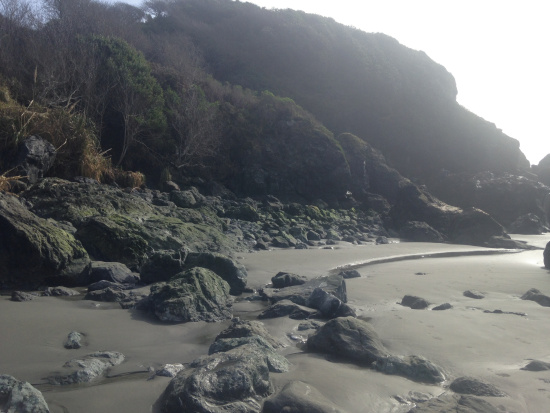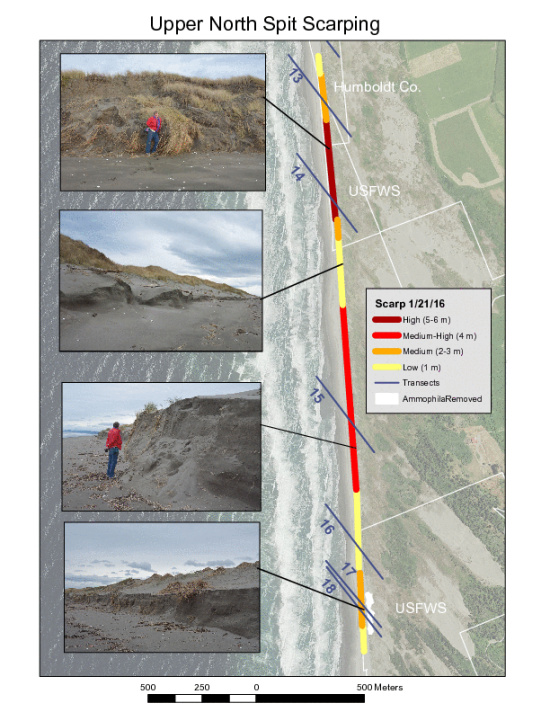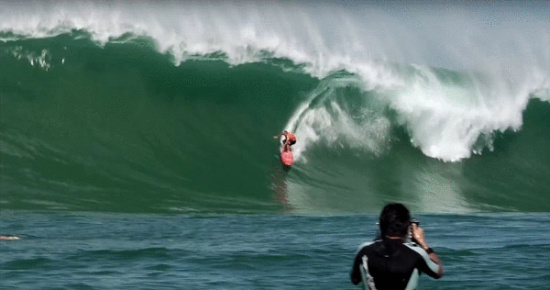Last weekend during a brief break in the torrential rain downpour, I made an escape to Camel Rock (Houda Point) for a little beach-fix. As I am normally tearing down the beach, surfboard in-hand with tunnel vision to get the the waves, it was a nice change to slow down and take in my surroundings. To my surprise, the beach was almost unrecognizable after being menaced by this year’s storms.
Beaches are dynamic places, but growing up in Humboldt County I have never witnessed this much of a change over such a short period of time. Rocks previously buried under sand were covering the beach like sprinkles on a cake. Sand had been washed away from the base of the cliff and replaced with a mudslide of sediment and fallen trees. The dramatic makeover this season’s storms had given Camel Rock beach (in conjunction with El Niño) sparked a dialogue of questions running through my head. What factors are responsible for beach dynamics? How are other local beaches being affected? What does this mean for the future of our beaches? To answer my questions I hunted down local ecologist Andrea Pickart who gracefully answered my questions and more.
Pickart has been working on an exciting new project, the Dunes Climate Ready Study, the first of its kind, designed to understand how climate change will impact Humboldt’s coastal dunes and test the effectiveness of different adaptation strategies. The study has several components, one being characterizing beach and dune sediment dynamics and identifying vulnerabilities by collecting topographic data over a 32-mile littoral cell from Centerville Beach to Little River over the next five years. The team is just about to wrap up their first baseline surveys, which they started this past January.
Pickart explained how this was a challenging but exciting winter to collect data, being that it was an El Niño year. “We have really been able to watch erosion happening. We will be completing a of map scarp lines (natural cliffs), which will provide a record of where the most erosion happened this year” stated Pickard. (See graphic).
She described how there are two systems responsible for moving sand, terrestrial and aquatic. Waves are the primary force that moves sand up the beach or takes it away. Then once the sand has dried, wind takes over and is responsible for transporting the sand. How far that dry sand goes is then dependent on vegetation, as it can block and hold onto sand.
Relating this information back to what I observed at Camel Rock, it made sense that an abnormal amount of sand had been stripped from the beach since there is a cliff blocking its movement. “It is typical to get major erosion in pocket beaches such as Camel Rock during an El Niño event,” Pickart said. So taking this into account, what can we expect to see our beaches look like in the future? Pickart explained how after this year we will most likely go into a La Niña or neutral phase. “As long as there is still sediment coming in we would expect the beach to build back up. But we could be getting more frequent storm events so there might not be adequate time for buildup to happen.”
If there is a take-home message from all of this, it is the beauty of how dynamic the coastline is. Going to the beach is always a new experience. The same place can look different year to year, day to day, even hour to hour. It will be extremely interesting to follow the Dunes Climate Ready Study over the next few years and see what the study reveals.
And speaking of the study … this Saturday is your chance to learn more!
Friends of the Dunes is hosting a Dunes Climate Ready Public Meeting this Saturday, Feb. 27, from 9 to 11 a.m at the Humboldt Coastal Nature Center. This interactive session will inform you about the areas of the coast that are the most vulnerable, adaptation strategies and open a dialogue with researchers and community members.
###
And while you have beaches on your mind… how about helping keep them clean?
Join the Northcoast Environmental Center and Surfrider Humboldt as they help PacOut Green Team kick off their third year of keeping our beaches clean! Meet this Saturday, Feb. 27, at the Samoa Boat Ramp at 8:45 a.m., power clean for 60 minutes, win some raffle prizes, then you’re on with your day!
###
Before we go… “Eddie Would Go!”
The rarely-held In Memory of Eddie Aikau big wave surfing contest ran yesterday, crowning 23-year-old John John Florence the champion! The waves on Oahu’s North Shore at Waimea Bay reached the required 40-feet height to hold the contest. In the past 30 years the contest has only been held nine times. Watch the highlights in all their glory HERE!
###
Delia Bense-Kang serves as the Northcoast Environmental Center’s Marine Protected Area Outreach Coordinator and chairs Surfrider Foundation’s Humboldt Chapter.



CLICK TO MANAGE